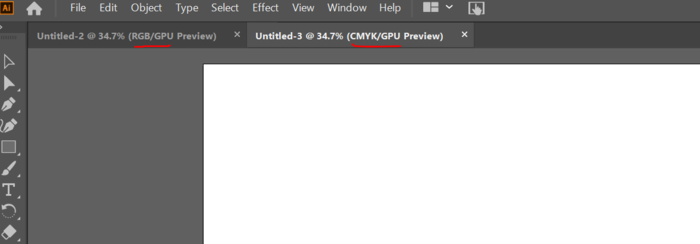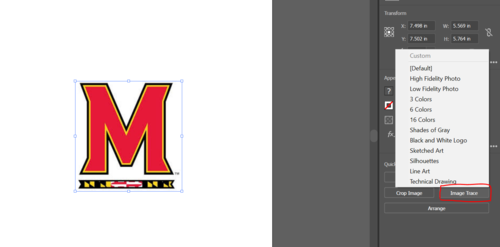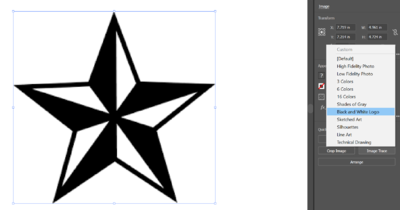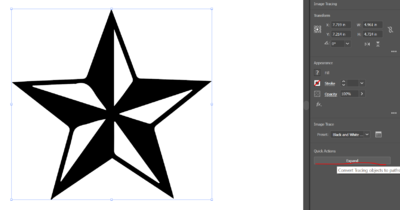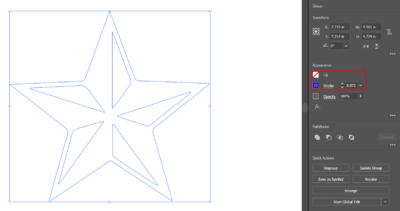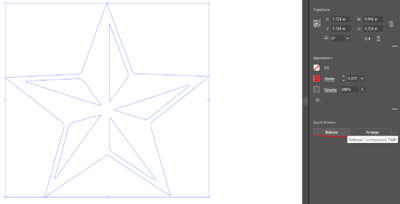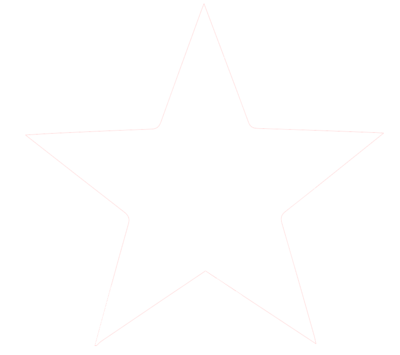Adobe Illustrator: Difference between revisions
No edit summary |
m (→Adobe Basics) |
||
| Line 5: | Line 5: | ||
If you would like anything added to the wiki please comment in the discussion tab at the top or inform a manager. | If you would like anything added to the wiki please comment in the discussion tab at the top or inform a manager. | ||
== Adobe Basics == | == Adobe Illustrator Basics == | ||
The easiest way to get started is clicking create new and either using one of the preset templates for size or go to art & illustration and making a large canvas by changing the size to some large number bigger than you need like 15 inches by 15 inches (Make sure you change the units from points to inches). | The easiest way to get started is clicking create new and either using one of the preset templates for size or go to art & illustration and making a large canvas by changing the size to some large number bigger than you need like 15 inches by 15 inches (Make sure you change the units from points to inches). | ||
Revision as of 19:39, 27 December 2019
Adobe Illustrator is a graphic design application used to create Universal Control Panel (UCP, laser cutter printer program) compatible files that can be printed. Adobe illustrator is not the only file that can create files compatible for printing but it is the program that is default installed on the two computers in the prototyping room hooked up to the cutters. From adobe illustrator you can print to the UCP by printing and setting the printer as VLS. If you have another program you use to create graphics, you can export the graphic as an image and import it into Adobe to print on the computers in the room.
Adobe Illustrator is available for all UMD students on terpware with a valid student account. You can then create designs on your own computer and just bring it in to be printed.
If you would like anything added to the wiki please comment in the discussion tab at the top or inform a manager.
Adobe Illustrator Basics
The easiest way to get started is clicking create new and either using one of the preset templates for size or go to art & illustration and making a large canvas by changing the size to some large number bigger than you need like 15 inches by 15 inches (Make sure you change the units from points to inches).
Make sure you are in RGB mode under "Advanced Options" because if you aren't then you won't be able to make a full blue line for vector cutting (To change, go to File->Document Color Mode).
Importing and Editing Images
Images can be imported into Adobe by dragging the picture from your computer onto the canvas or copy pasting the image from the internet. All images that are entered will default be rastered because the colors are not absolutely red or blue like cutting needs to be.
Using Image Trace
The image entered is normally something like a PNG or JPG or similar picture. Adobe Illustrator needs it to be an SVG file to be able to print to the printer as a raster. This can be done by clicking the image and going to the image properties and clicking "Image Trace".
This image trace will scan your image and produce it as a Scalable Vector Graphic (SVG) which means it can be resized to any size and keep its quality. This SVG is whats needed for the UCP to be able to cut. Without this SVG the image will not be printed. Each of these image traces are used in different situations to produce a different outcome:
- High/Low Fidelity Photo: Used for tracing actual images. High is for high quality and low is for lower quality images (Try both to see which is better)
- 3/6/16 Colors: Limit the number of colors in the design to the designated amount. If there are more then Adobe will change similar colors to the same color. This is useful for clipart and similar images without too much detail. This will still retain similar colors to the base image but can lessen the detail of multiple colors possibly enhancing the look of cutting.
- Shades of Grey: Changes all colors into different shades of grey. This keeps the overall look of the image as lighter colors will be lighter shades of grey and darker colors will be darker greys. This is useful for printing as it is more of a representation of what your image will print like. Since the cutter can't do colors the different shades of grey represent the different levels of intensity of cutting.
- Black and White Logo: Changes all of the colors to either a black or white. Very useful for creating contrasting images because it will either cut somewhere or not, not having different shades of cutting. Every color that is changed to black will be cut and every color that is white will not be cut. Very useful when cutting glass/clear material as different intensities of cutting do not show distinguishable shades in the material.
- Silhouettes: Turns all colors of the image to black. Used for just cutting the shadow of a full image instead of wanting detail inside. Also allows you to easily get the outline of an image. More information on getting the outline in Outlining an Image
These are not all the possible options but the most useful ones. Feel free to try the others and figure out their uses. You can also keep switching between all of the options to see which is the best fit for your image.
Outlining an Image
ADD PICTURES HERE Sometimes you might not want to raster an image and would just like to vector cut the outline of the image, or vector outline the outside of an image and raster the inside. Outlining images is also very important for cutting on glass or clear material because different colors don't show up well on transparent materials.
To create an outline of an image to vector cut the image rather than raster, firstly you need to image trace it.
Next you need to expand the image to allow editing on the paths.
Then you need to change the stroke to what color you want (blue for vector, red for cut, any other for raster) and set the fill to nothing. This will remove all colors inside and just leave the shell outline.
use the
You must remember that sometimes the outline square of the image is still there. To remove this you can Editing the Paths of an Image section to help delete it. Short answer is double click a path to go into isolation mode, click a path and delete it.
If you want to remove some of the paths that were outlined you can check the Editing the Paths of an Image section. This can be useful for creating an outline for cutting out a rastered image. You can outline the entire image and delete everything but the outline and place the rastered image inside the outline. This will raster the inside but cut out the entire image.
Editing the Paths of an Image
After image tracing an object and expanding the path. This creates the paths of the object that it thinks is best but sometimes you don't want all of them. In order to remove some of these you first need to go into isolation mode by double clicking on a path. Then you can click individual paths and delete then how you see fit.
You might find while deleting some paths that multiple paths are connected together. These paths are grouped together and can be released by clicking on the paths and clicking Release. This allows you to click the individual paths and delete them.
Now you would be able to place this outline over a copied, traced, version of the image and have the image also be cut out.
Adobe Tips
- Make sure when you are creating the new page for design, that the advanced option is set to RGB mode or else you won't be able to make the colors for vector cutting.
- If you are in CMYK mode or vector cuts don't seem to be showing up as vector cuts in the UCP then check this setting.
- In order to cut out an image you need to image trace it. See Using Image Trace for more help.
- When rastering images onto glass and clear acrylic, do not try and use intricate pictures with many colors.
- Glass and clear material doesn't differ much depending on how deep the cut is. Normally try and make it a silhouette or black and white logo and it will cut much nicer.
